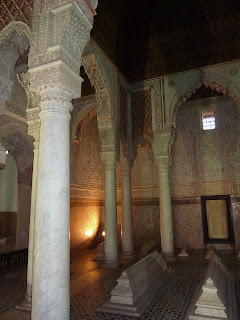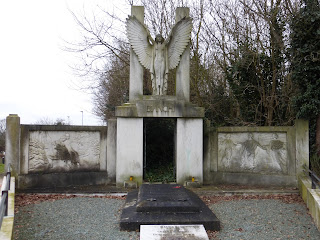Although
I tend to only add short articles to this blog, and base it on sites
I’ve visited, I’ve recently noticed a type of tomb in old
churches and cathedrals which I’ve never spotted before and wanted
to write about in a bit more detail.
I
can’t believe I’ve walked past them and not noticed them (I’m
drawn to depictions and symbols of death!), but since spotting one in
Arundel earlier this year, I’ve been doing a bit of research into
these ‘Cadaver Tombs’.
A cadaver tomb is a type of recumbent tomb featuing an effigy of the dead in the fom of a decomposing corpse, not quite a skeleton. They're known as 'transi', emphasising the transition they show between life and death. They were particularly characteristic of the later Middle Ages, appearing mainly from the mid-15th Century.
In the versions which I've spotted so far, both of the 'double decker' type, a carved stone bier displays, on the top level, the recumbent effigy of the person as they were in life, and on the bottom level the person as a rotting cadaver, often shrouded (and apparently sometimes complete with worms and other flesh-eating creatures, although I haven't seen those so far).
These tombs were made only for high-ranking nobles, bishops and the like, because they had to be rich to afford to have one made, and powerful enough to be allocated space for one in a church. They are found in cathedrals and parish churches in England, although they are most common in continental Europe.
The earliest surviving one, in Lincoln Cathedral, is to Bishop Richard Fleming (also the founder of Lincoln College, Oxford), who died in 1431. It's built into a wall in the cathedral, and I managed to spot it just the other day.

Another I've seen recently, which was in wonderful condition, is the free-standing tomb of John FitzAlan, the 14th Earl of Arundel, who died in 1435. His tomb is in the Fitzalan Chapel in the grounds of Arundel Castle.
I'm not an expert in medieval burial practices or art, but I'm going to be looking out for these tomb types wherever I go now! Maybe I should take a look at photographs I've already taken in cathedrals across England - I bet there are one or two of these tombs lurking in the background!














































